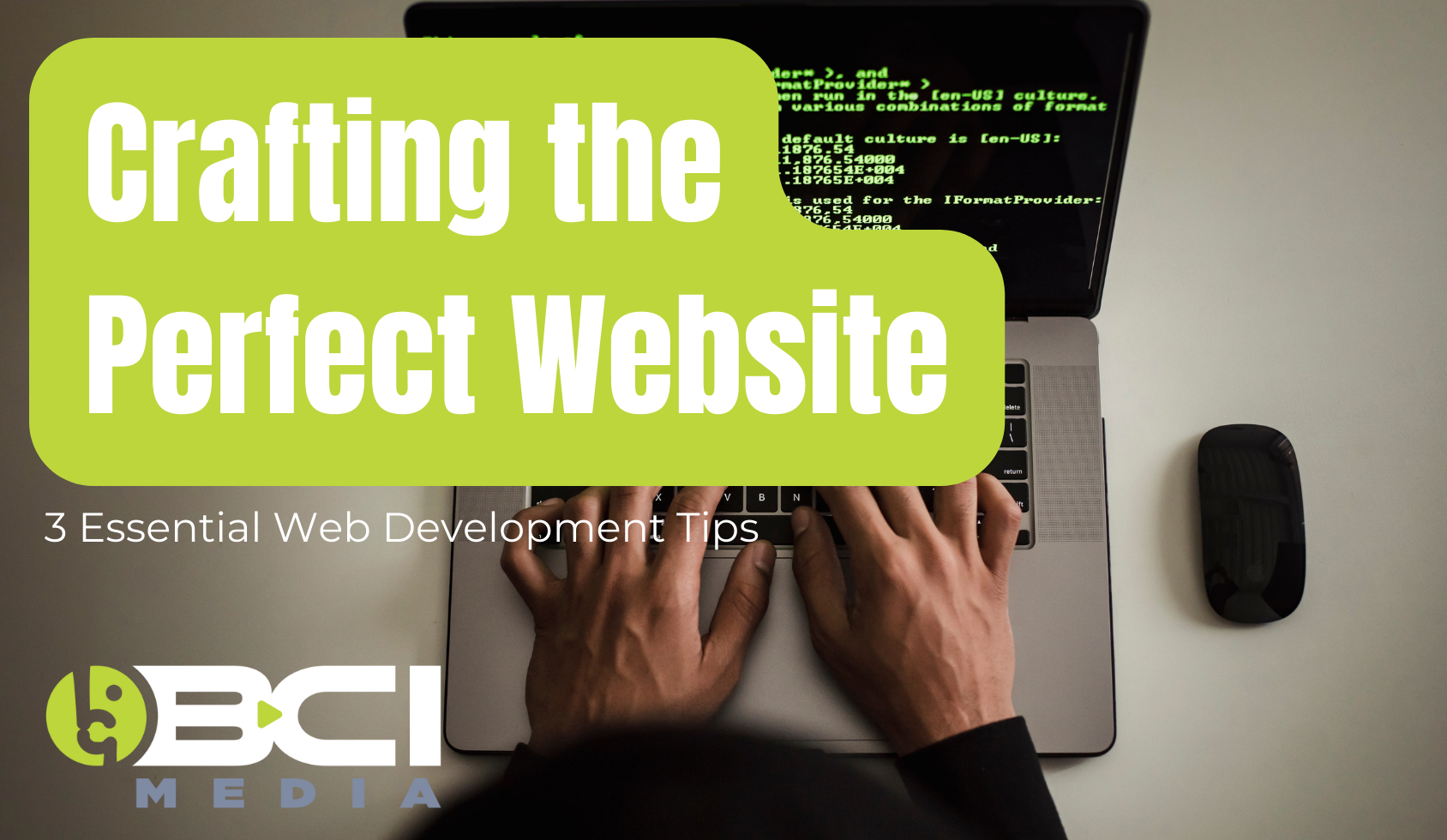A website is often the first point of contact between a business and its potential customers. It serves as a virtual storefront, representing the brand and conveying its message to visitors. Crafting the perfect website requires careful planning, attention to detail, and a solid understanding of web development principles. Let’s explore three essential web development tips to help you create a website that captivates your audience and drives results!
1. Prioritize User Experience (UX) Design
User experience (UX) design plays a crucial role in the success of a website. It encompasses everything from navigation and layout to readability and accessibility. A well-designed UX ensures visitors can easily find what they’re looking for and navigate the site seamlessly.
To prioritize UX design, start by understanding your target audience and their needs. Conduct user research to gain insights into their preferences, behaviors, and pain points. Use this information to create user personas and tailor your website’s design to meet their specific needs.
Next, focus on intuitive navigation and clear hierarchy. Organize your content in a logical manner, with important information easily accessible from the homepage. User descriptive labels for navigation menus and buttons and minimize the number of clicks required to reach key pages.
Pay attention to readability and accessibility by choosing legible fonts, maintaining adequate contrast between text and background, and ensuring compatibility with screen readers and other assistive technologies. Ensure your website is responsive on various devices, providing a seamless experience in all sizes.
By prioritizing UX design, you can create a website that engages visitors and encourages them to explore further, ultimately driving conversions and achieving your business goals.
2. Optimize for Speed and Performance
Users expect websites to load quickly and perform seamlessly. In today’s world, if we don’t get instant gratification from a quick-loading website, we will likely click away. Slow loading times can lead to frustration and high bounce rates, resulting in lost opportunities and revenue. To ensure optimal speed and performance, prioritize website optimization techniques.
Start by optimizing images and multimedia content to reduce file sizes without sacrificing quality. Compress images using tools like Photoshop or online services such as TinyPNG, and consider lazy loading techniques to defer the loading of non-essential content until it’s needed.
Minimize HTTP requests by combining CSS and JavaScript files, and leverage browser caching to store static assets locally, reducing load times for returning visitors. Implement asynchronous loading loading for JavaScript files to prevent blocking and improve overall page load speed.
Consider using a content delivery network (CDN) to distribute your website’s content across multiple servers worldwide, reducing latency and improving performance for users in different geographic locations. By optimizing your website for speed and performance, you can provide users with a fast and seamless browsing experience, increasing engagement and retention.
3. Focus on Search Engine Optimization (SEO)
Search engine optimization (SEO) is essential for ensuring your website ranks well in search engine results pages (SERPs) and drives organic traffic to your site. By optimizing your website for relevant keywords and improving its overall visibility, you can attract more visitors and increase your chances of conversion.
Start by conducting keyword research to identify relevant terms and phrases that your target audience is searching for. Use tools like Google Keyword Planner or SEMrush to discover high-volume keywords with low competition and incorporate them strategically into your website’s content, tags, and headings.
Optimize your website’s structure and architecture to make it easy for search engines to crawl and index your pages. Use descriptive, keyword-rich URLs, and create an XML sitemap to help search engines discover and prioritize your content. Ensure your website is mobile-friendly and responsive, as Google now prioritizes mobile-first indexing.
Focus on creating high-quality, valuable content that resonates with your audience and addresses their needs and pain points. Publish regular blog posts, articles, and other resources demonstrating your industry expertise and authority. Encourage social sharing and back-linking to improve your website’s authority and credibility.
Monitor your website’s performance closely in search engine results and make adjustments as needed to improve rankings and visibility. Track key metrics, such as organic traffic, keyword rankings, and conversion rates, and refine your SEO strategy accordingly.
By focusing on search engine optimization, you can increase your website’s visibility and attract more relevant traffic, ultimately driving business growth and success.
We’re Here to Help
Crafting the perfect website requires careful attention to detail and a strategic approach to web development. By prioritizing user experience design, optimizing speed and performance, and focusing on search engine optimization, you can create a website that captivates your audience, drives results, and helps you achieve your business goals. At BCI Media, we specialize in making your dream website a reality and garnering tangible results.
